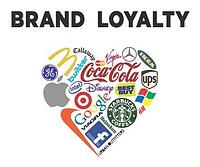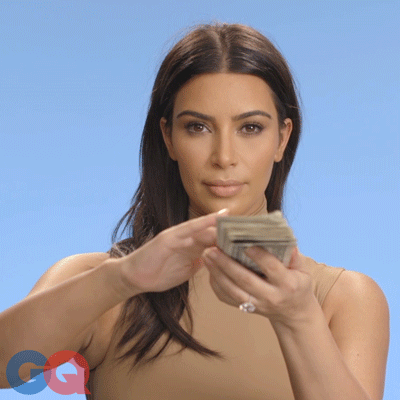 Wouldn't it be great if we got a treat every time we did something right? My sister is training her new puppy using behavior modification techniques. For Finn the Labradoodle, "Sit" = treat. "Stay" = treat. "Come" = treat. Finn still acts like an exuberant two-year-old with acute ADD, but he is starting to remember that chewing on grandma's hand never results in a treat.
Wouldn't it be great if we got a treat every time we did something right? My sister is training her new puppy using behavior modification techniques. For Finn the Labradoodle, "Sit" = treat. "Stay" = treat. "Come" = treat. Finn still acts like an exuberant two-year-old with acute ADD, but he is starting to remember that chewing on grandma's hand never results in a treat.
Marketing would be so simple if we sold our products to dogs, but for people it gets a bit more complicated. However, there are some universal truths that should inform our approach to building brand loyalty.
Violate this list of DOs and DON'Ts and get whacked with the rolled-up newspaper of public scorn. If your goal is to build a long and happy relationship with your customers, think about the following:
1. DO: Keep the door open...
 …to the public. Make sure your brand is memorable, emotionally appealing, top of mind, well known - all those things that make up your corporate identity. What do people associate with your brand? Remember the BP oil spill? For the last few years since, all of BP's ads have focused on "taking responsibility" for the disaster. That's good, but be careful about reminding people about the disaster when they have all but forgotten. At some point BP must move on.
…to the public. Make sure your brand is memorable, emotionally appealing, top of mind, well known - all those things that make up your corporate identity. What do people associate with your brand? Remember the BP oil spill? For the last few years since, all of BP's ads have focused on "taking responsibility" for the disaster. That's good, but be careful about reminding people about the disaster when they have all but forgotten. At some point BP must move on.
Be a company that listens. Show the world that you respond presented with a grievance. Social media like Twitter can be a great place to manage this process. A strong corporate identity does not focus on the company imagine only, it conveys an entire culture and philosophy that your customers relate to.
…to the interested. Make them offers they would have a hard time refusing. This is where the art of loss-leading plays a role, first time discounts, warranties, extra service bundles - anything to say unmistakably that you WANT their business.
…to loyal customers. Reward them. Surprise them. Give them the kinds of time, discounts, recognition and thanks that they deserve, especially if they have brought other business your way.
DON’T: be half hearted about it
Do you still get emails from businesses that you used once or twice and have not had the occasion to use them again? That's like having a guy from the local car dealership stop by once a week and asking about the likelihood of a trade-in or a purchase. I've actually had realtors going door-to-door in my neighborhood hoping I'd be in a selling mood.
Find a way to make your regular contacts worthwhile and helpful for the consumer. In fact I might read something from the Ford dealership on maintenance tips or a bio on a new staff member, but don't make me slog through material on new models and prices that would interest only a tiny fraction of your clientele.
2. DO: earn the love
Let's start with honesty. When you lie or misrepresent something, it makes it extremely difficult for a loyal customer to stay. Think about it - would you rather have someone admit a goof and help to make it right or deny and blame?
It's tempting to cut that corner or fudge that number, but don't. Your product will sell if you believe in it. Believe it or not, your brand-loyal customers care about you. Don't sell them out by cutting corners.
Be transparent, accept criticism like mature adults.
DON’T: take loyalty for granted
Who are the real heroes of your business? Your loyal customers, that's who! Tell them so. Reward them. Ask for their advice. Make them feel invested in your company and they'll spread the word about you.

3. DO: pay attention to Switching Cost
If you're a loyal Starbucks customer, the thought of ordering a coffee in one of those funky little mom and pop coffee shops is slightly intimidating. What do they call their 12 ounce cup? What kinds of coffee do they have? Will I like it? Do they have shots? Syrups? The little sprinkles I like on top of my caramel macchiato?
The feeling of the simplicity of what we know is just less stressful than trying to enjoy an unknown new thing. "Switching Cost" is a subjective measure of the output of energy needed to abandon one brand for another.
Smart companies make the cost of switching so high that no one considers it. Apple has built a rabid following in part because of the personal investment each customer has made in the brand. The thought of going back to a PC is just too daunting (and expensive).
What would it cost your customers to start researching your competitors? How can you make that cost too high? What factors led them to give up on you?

DON’T: forget what it's like to switch
Many of your customers may have found their way to you as refugees from a competitor. What was it like for them to slowly build their undying love for your brand? Think about what it feels like to walk into a new doctor's office / car dealership / church / school / locker room…? What do you wish you had before you had to enter that new realm?
Maps are good. Google street view has prevented more late arrivals than we will ever know. Is there a "map" showing how your loyal customers got to be so die-hard? Stories, facts, figures, staff, locations… what will make a person feel just a little easier about following your star customers into jumping to your brand?
How can you find and recognize your brand evangelists?
Indeed, your company's best friend is that loyal customer that is glad to buy from you every time.
Consider your present approaches to building brand loyalty. Is your neglect creating runaways? Are your customers confused about your expectations? Are you in the dark about theirs?
Dog training professionals will tell you that their classes are not for the dog, but for the owner. Now sit and stay. You're a good business, yes you are!
To learn more about brand building with logo design, corporate identity kits and more, contact your experts at United WebWorks today.

